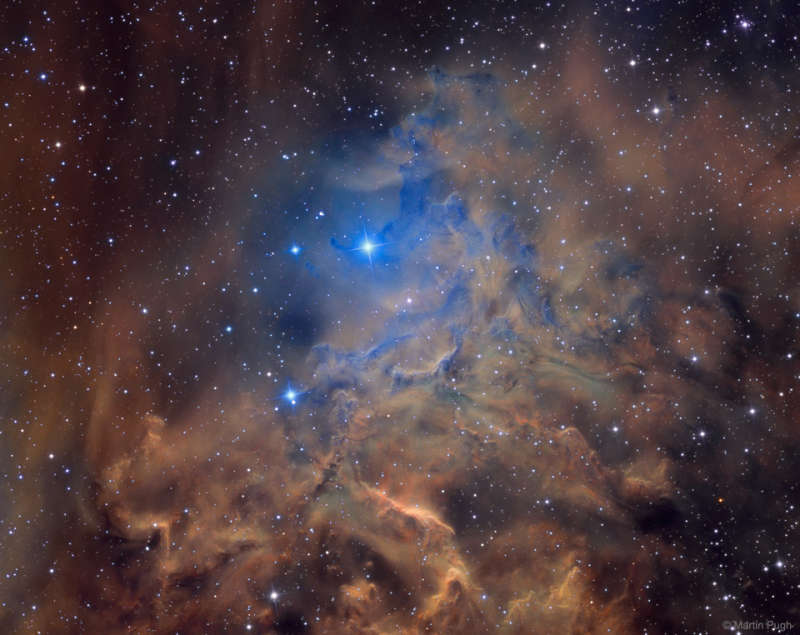
|
Credit & Copyright: Martin Pugh
Explanation:
Why is AE Aurigae called the flaming star?
For one reason, the surrounding nebula
IC 405 is named the
Flaming Star Nebula because the region seems to harbor smoke,
even though nothing is on fire, including interior star AE Aurigae.
Fire,
typically defined as the rapid molecular acquisition of
oxygen,
happens only when sufficient oxygen is present and is not important
in such high-energy, low-oxygen environments.
The material that appears as
smoke is mostly
interstellar hydrogen,
but does contain smoke-like dark filaments of carbon-rich
dust grains.
The bright star
AE Aurigae is visible near the nebula center and is so
hot it is
blue, emitting light so energetic it knocks
electrons away
from atoms in the surrounding gas.
When an atom recaptures an electron, light is emitted creating the
surrounding emission nebula.
The
Flaming
Star nebula lies about 1,500
light
years distant, spans about 5 light years,
and is visible with a small telescope toward the
constellation of
the
Charioteer (Auriga).
|
January February March April May June July August September October November December |
| ||||||||||||||||||||||||||||||||||||||||||||||||
NASA Web Site Statements, Warnings, and Disclaimers
NASA Official: Jay Norris. Specific rights apply.
A service of: LHEA at NASA / GSFC
& Michigan Tech. U.
Based on Astronomy Picture
Of the Day
Publications with keywords: AE Aurigae - emission nebula
Publications with words: AE Aurigae - emission nebula
See also:
- APOD: 2024 June 10 Á Sh2 132: The Lion Nebula
- APOD: 2024 May 1 Á IC 1795: The Fishhead Nebula
- APOD: 2024 April 24 Á Dragons Egg Bipolar Emission Nebula
- APOD: 2024 March 13 Á The Seagull Nebula
- APOD: 2024 February 21 Á Seagull Nebula over Pinnacles Peak
- NGC 1893 and the Tadpoles of IC 410
- The Light, the Dark, and the Dusty
